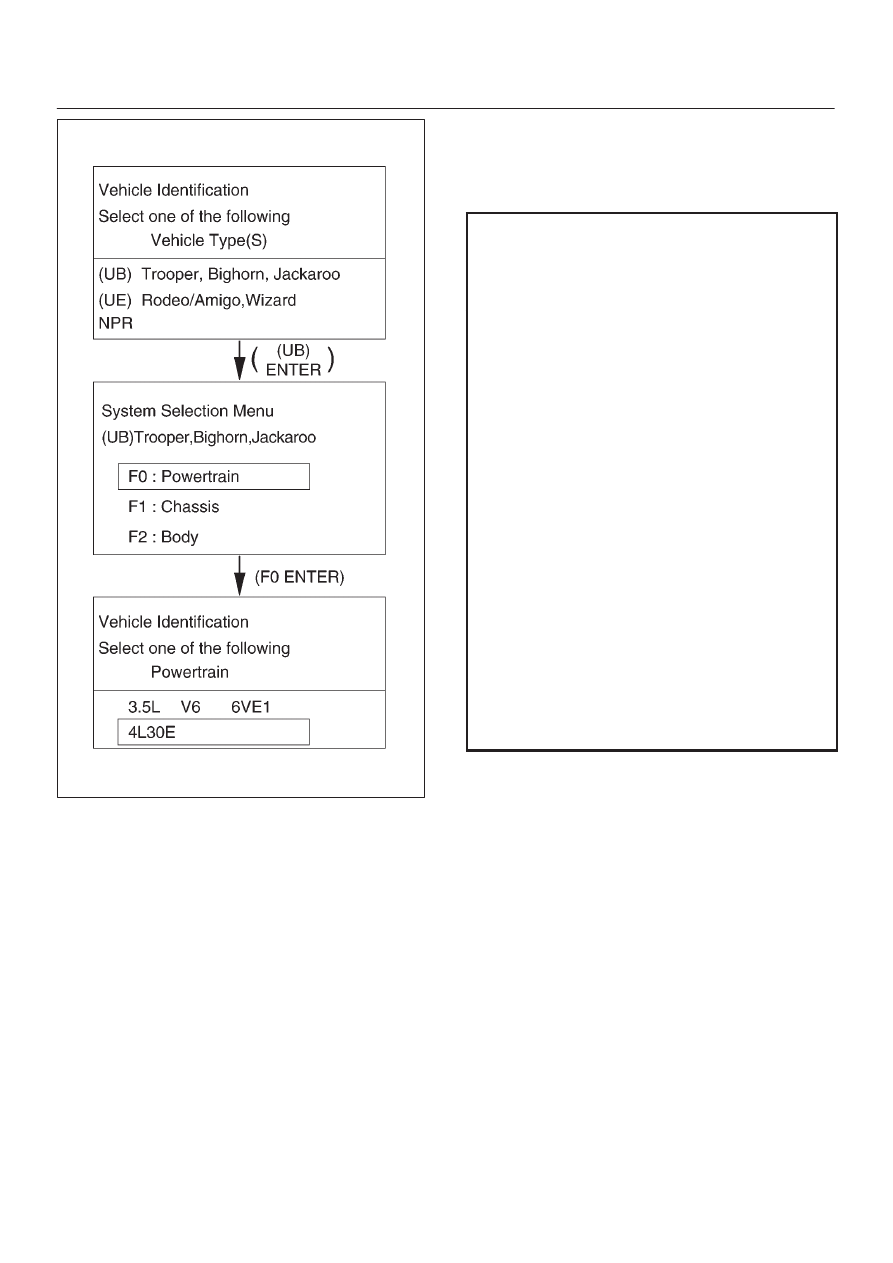Isuzu Amigo / Axiom / Trooper / Rodeo / VehiCross. Manual - part 924

7A1–16 TRANSMISSION CONTROL SYSTEM (4L30–E)
060R200253
Once the test vehicle has been identified an “Application
(Powertrain) Menu” screen appears. Please select the
appropriate application.
The following table shows, which functions are used for
the available equipment versions.
F0: Diagnostic Trouble Codes
F0: Read DTC Info Ordered By Priority
F1: Clear DTC Information
F2: DTC Information
F1: Data Display
F0: Transmission Data
F1: Output Driver Data
F2: Snap Shot
F3: Actuator Tests
F0: Lamps
F0: Check Light
F1: Winter Drive Lamp
F2: Power Drive Lamp
F3: AT Oil Temperature Lamp
F1: Solenoids
F0: Solenoid 1-2/3-4 Test
F1: Solenoid 2-3 Test
F2: TCC Solenoid
F3: Band Apply Solenoid
F4: Pressure Control Solenoid (PCS)
F4: Function Tests
F0: Reset Oil Life Monitor